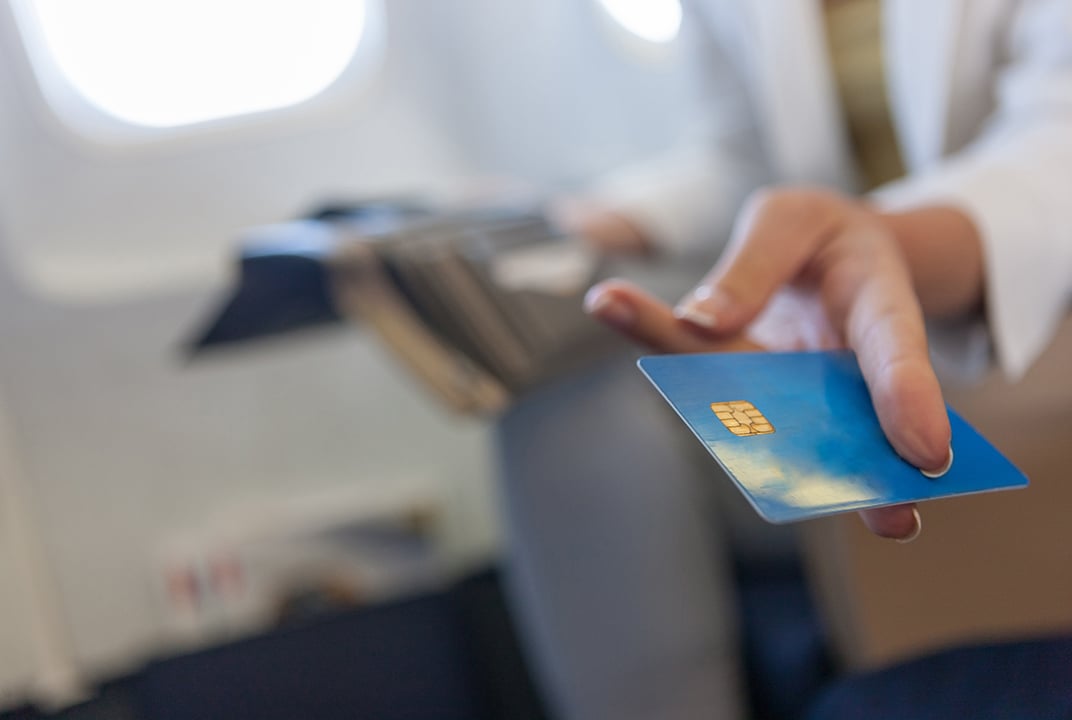Insight | How airlines can reclaim the travel experience
Select Language
How airlines can reclaim the travel experience
Aviation
Booking platforms have been stealing airlines’ thunder for a decade. But the fight back has begun.
Remember the so called ‘glory days’ of air travel? Before the internet, airlines held the keys to the travel industry. Passengers trusted them with their booking and didn’t have the will or the means to compare prices and experiences and saw no reason to switch unless the experience had been notably uncomfortable or potentially life-threatening.
Over the last decade, the likes of Expedia, Opodo, Google Flights and Booking.com have exploited the appetites of increasingly bargain-hungry travellers. By including car hire, hotel booking and holiday packages in their deal-rich arsenal, these travel agent aggregators have diminished airlines, once travel-providers, to mere facilitators or ingredient brands.
No stranger to scraps with aggregators, Ryanair has long called for other airlines to offer price-comparison services of their own. Speaking in 2015, CEO Michael O’Leary said, “It’s something the airlines could and should be working on together. It makes no sense to have third party price comparison sites out there. If the airlines were competitive and had a competent digital offering, then these parties shouldn’t exist.”
Airlines need to rethink their approach to better fit customer behaviour and they have some clear advantages here. Airline brand equity still matters and having a direct transactional relationship with passengers gives an advantage when it comes to customer service – one area where third-party aggregators don’t do so well. BA holidays is one example of rolling out a trusted transit service to the wider experience.
Carefully chosen partnerships can also unlock new ancillary revenue opportunities, while exclusive access to rich passenger data means airlines can deliver personalised services that go far beyond just pre-ordered meals.
A lack of loyalty for low-cost carriers
Low-cost airlines have the most to lose in a market where ticket price is the main consideration – not least because they stand more chance of being outperformed by rivals in an environment where the best deal wins, appearing near the top of the list in third-party aggregator search results. Hence Ryanair’s move to set up its own aggregator to complete the expansion kick started by RyanairRooms.
Larger carriers are also beginning to wake up to this reality. In the US, American Airlines, Delta Air Lines and United Airlines all recently introduced no-frills flights that undercut what used to be their lowest fares – though care is needed when unbundling fares to avoid accusations of the ‘calculated misery’ described by The New Yorker in 2014.
More established low-cost and short-haul airlines are also widening their appeal by offering connecting services to partner carriers that can be booked online in one go, for example EasyJet with Norwegian and WestJet.
Agents, not airlines
Ryanair has since taken a different approach to lure passengers from those third parties. Paying close attention to passenger needs is part of a business-wide transformation that began with the creation of Ryanair Labs in 2015. A much-improved web site that speeded up the booking process (and that handles connecting flights) launched in 2016, followed a year later by discounts on flights for passengers booking car hire and hotels through the airline at the same time.
According to Chief Marketing Officer Kenny Jacobs, a broad offering is about reclaiming control from the competition. As he told Skift.com, “The travel equation starts with the airline. So, if you’re an airline who sells everything, you have a good chance of getting those people.”
And Ryanair has no doubt about who it’s up against. “When I say competition, the competition is Google, it is Amazon. It is not Aer Lingus or EasyJet.” said John Hurley, Head of Ryanair Labs.
The recent addition of package holidays also means Ryanair sits alongside the likes of EasyJet and British Airways as an airline who’s also a travel agent. Apart from an obvious boost to bottom line, providing a seamless start-to-finish travel service also gives these airlines a chance to polish their brand, not least by ironing out the difficulties often faced by travellers arranging ‘unbundled’ trips themselves.
This is an approach that’s certainly worked for Jet2.com. Over the last 15 years, the airline has grown from two aircraft flying to nine destinations, to 88 flying to 65, and pre-tax profits at parent company Dart were up 49% to £134.6 million in 2018. More to the point, Jet2 routinely scores highly for customer satisfaction, both as an airline and as a travel company.
Consider customer needs
Airlines are also enhancing customer service in other innovative ways, recognising that the halo effect than comes from a positive experience alone can be more valuable than not engaging with a potential customer at all.
Lufthansa’s AirlineCheckins.com, for example, enables passengers to check-in on more than 100 airlines worldwide. Free, fast and automatic (it even tries to match a passenger’s seat preference), this may not add directly to revenue, but it portrays Lufthansa as an airline that puts passengers’ needs before its own.
AirAsia’s recent ground-based partnerships have, however, managed to boost revenue. Earlier this year, it teamed with Uber to offer passengers discounted rides and seamless door-to-door travel with taxi bookings that are in-step with flight schedules. Together with Plaza Bali Duty & Tax Free, it also launched an online service that enables passengers to shop online at their leisure and either collect purchases at the airport or have them delivered to their plane.
Personal service counts
Airlines know passengers’ names, addresses, where they’re going and how long they’re staying. Seat class and travelling frequency can even be used make an educated guess about financial status. And thanks to increasing uptake and quality in IFC, airlines can begin to create data-generated profiles that will allow them to shape and tailor their offer in ways that Expedia could only dream of.
Passengers are a literal captive audience – one that’s perfect for discounted late-inventory services and super charged with data-informed personalisation. Competitive price incentives for flights booked as part of a bigger package are one way to lure customers away from aggregators, but steep ‘last-minute’ discounts on car hire, restaurants and event tickets encourage passengers to wait until they’re onboard before worrying about such things.
Airlines are capturing and pooling data in ways that aggregators can’t compete with – and using it to build loyalty. Developed with Accenture, Star Alliance’s DSP platform gathers passenger data from member airlines and third parties and makes it available to all group members. This means that when a passenger orders a particular drink on one flight, for example, the change can be noted and a flight attendant on a connecting flight can offer the same drink, unprompted – the kind of service usually only offered by the best bars.
Delta goes further still by recording volunteer passengers’ heart rates as part of a wider strategy to improve flights’ more stressful aspects – airport parking, security checks, boarding and so on.
“The challenge is to make every customer feel like one in 180 million, versus one of 180 million,” said Tim Mapes, Delta’s Chief Marketing Officer. “How do we personalise and customise and humanise everyone’s particular experience?”
Own the experience
Airlines have the means, the partnership opportunities and the technology to compete with aggregators and reclaim the passenger journey – they just need to decide on the future role they want in the industry. ‘Uber or Uber driver’, as Peter Glade, commercial director of Sun Express (a leisure airline owned by Lufthansa and Turkish Airlines) puts it.
“Am I the one that is transporting the passenger from A to B, or am I the one that is managing the problem that the customer has to an extent that the customer is happy and wants to fly with me again?” he said. “Do I want to be a transportation organisation or a problem solver?”
But the risk for airlines who don’t take this step involve more than just missing out on new revenue opportunities – they risk losing passengers altogether.
“There could even be a world where passengers say, ‘I don’t care who I am flying with,’” says Glade. “‘The most important thing is that I booked on platform ABCD, because that’s where I get the best service.’”


